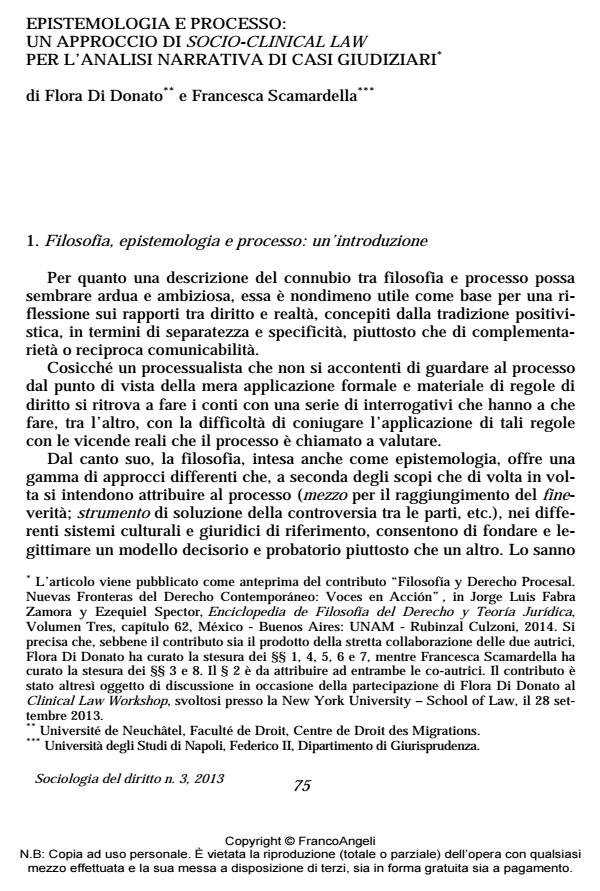Epistemology and legal proceedings: a socio-clinical law approach to a narrative analysis of judicial cases
Journal title SOCIOLOGIA DEL DIRITTO
Author/s Flora Di Donato, Francesca Scamardella
Publishing Year 2014 Issue 2013/3
Language Italian Pages 35 P. 75-109 File size 654 KB
DOI 10.3280/SD2013-003004
DOI is like a bar code for intellectual property: to have more infomation
click here
Below, you can see the article first page
If you want to buy this article in PDF format, you can do it, following the instructions to buy download credits

FrancoAngeli is member of Publishers International Linking Association, Inc (PILA), a not-for-profit association which run the CrossRef service enabling links to and from online scholarly content.
It is possible to start out from different epistemological approaches to the study of legal proceedings in order to identify decision-making processes and evidence that investigate how the proceedings function - how the truth is established, conflicts are solved, etc. - according to the cultural and legal system in which they operate. Even so, studies devoted to the influence exerted by culture - construed as the context of social and institutional relations - on the origin and solution of legal conflicts are still somewhat underdeveloped. This article draws a comparison between, on the one hand, logical or epistemological models for studying proceedings and, on the other hand, culturally-based models, discussing certain positions of relevance in contemporary academic debate. Taking its inspiration from a model of law in action, the authors analyse a legal case to illustrate the type of agency brought into being by the protagonist as a means of solving it. This kind of agency appears to be affected not only by familiarity with the formal rules of the proceedings, but also by cultural codes or behavioural norms typical of the contexts in which a social actor operates (the family, work etc.). With the aim of reconciling the dimension of epistemological analysis of the proceedings to a contextual perspective, the authors propose a socio-clinical law model for analysing legal cases.
Keywords: Philosophy of procedural law, Epistemology, legal narrations, socio-clinical law approach
Flora Di Donato, Francesca Scamardella, Epistemologia e processo: un approccio di socio-clinical law per l’analisi narrativa di casi giudiziari in "SOCIOLOGIA DEL DIRITTO " 3/2013, pp 75-109, DOI: 10.3280/SD2013-003004